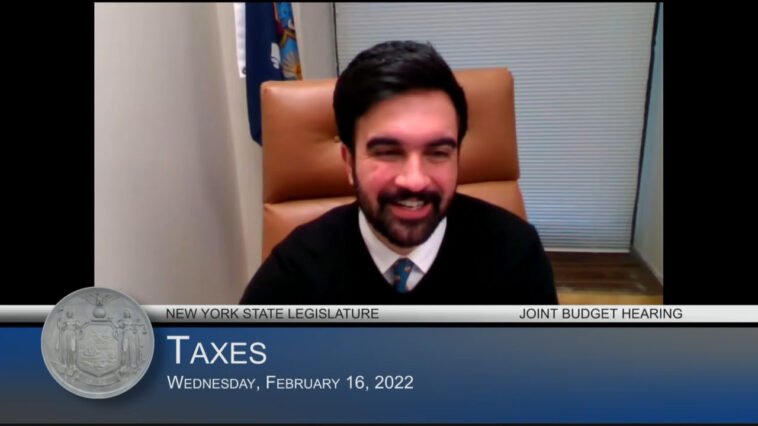Despite the evident failure of her 2024 presidential bid, Kamala Harris had been adamant about retaining most of the tax cuts introduced by Donald Trump in 2017, with one glaring contradiction. She had grandly proposed to increase taxes on the most affluent Americans. Interestingly, a similar gimmick is now being dangled by the Democratic nominee for New York mayor. Zohran Mamdani and his idealistic dreams of higher income taxes on New York’s high-earners, an increase of 2%, repackages old failures in the wrapping of new promises.
The grand scheme driving these proposals primarily seeks to drain cash from the pockets of the rich and channel the funds towards other ventures. The ultimate aim? To inflate the public treasury by any means necessary. Kamala Harris had envisaged using this methodology to reduce the estimated $2 trillion national deficit. Mamdani, lulled into a democratic socialist dream, wishes to allow free city bus rides and arbitrarily freeze New York rents.
It might seem that taxing the rich has been proven successful before. History reminds us of an era during World War II when the most prosperous Americans endured a staggering top tax rate exceeding 90% for the supposed benefit of the economy. Yet, the pressing question remains – would this antiquated strategy be viable in today’s environment?
One of the most glaring shortcomings of raising taxes on America’s wealthiest citizens is the potential for them to simply pack their bags and leave. The very prospect of higher taxes could prompt them to abandon the city, the state, or even the country, opting for locations with lesser financial burdens. One common escape route is moving their wealth offshore, a practice which substantial tax increases could stimulate.
This prospect was notably echoed in the dismissive response to Mamdani’s proposal. New York Governor Kathy Hochul, wielding the power to veto any potential tax increase, has cautioned against inciting a mass exodus of the city’s millionaires. In an interview, she voiced her concerns, humorously stating, ‘I don’t want to lose any more people to Palm Beach.’
Despite the evident shortcomings, Mamdani’s campaign carries on undeterred, estimating that a 2% tax on New York’s residents earning in excess of $1 million a year would amass an impressive $4 billion annually. However, this figure remains contingent on the millionaires’ willingness to remain in the city and pay the tax, a circumstance which remains far from certain.
Some argue that the warnings against a ‘millionaire tax’ might be exaggerated. According to numerous studies on tax implications and migration trends, higher tax rates do not necessarily push affluent individuals to relocate. These studies claim that top 1% earners are more stationary compared to other income groups, and when they relocate, they usually move from one high-tax area to another.
However, the unanimity within the research community isn’t absolute. There’s evidence illustrating a net loss of income from top earners who moved after enhanced taxes on high-income brackets were enacted. This situation, observed over a five-year span post the ballot measure’s activation, paints a different picture of the impact of higher taxes on the wealthy.
Some researchers believe that imposing higher taxes will increase revenue, yet this doesn’t necessarily hold true. Even if this theory was accurate, it doesn’t take changing domicile into account. Leaving the United States entirely over taxes is one thing. However, making a smaller move from Manhattan to Hoboken, New Jersey, is an entirely different scenario.
Tax rates play a part in where people choose to live, but it’s not the only factor to take into account. Several other elements influence this decision, such as job opportunities, climatic conditions, quality of life, and the overall cost of living. Higher taxes might be unappealing, yet they can be negligible when compared to other considerations.
In contrast, numerous studies suggest that ‘millionaire tax flight’ occurs, albeit ‘only at the margins,’ and at an insignificant rate. The decisions individuals make about where to live are influenced by various factors, some of which might not be financial concerns at all. Higher taxes are just one piece of the puzzle that can influence the decision to relocate.
Harris and Mamdani’s plans to impose higher taxes on wealthier citizens may appear well-intentioned, but these proposals need to be considered carefully for their potential impact. Creating an environment where wealthy individuals consider moving away could have staggering implications for local economies, job creation, and future investment in the areas they would be leaving behind.
The tax debate underscores the need for thoughtful and balanced public policy. Taxing the wealthy may seem like an easy fix to complex financial challenges, but it could have unintended consequences. It’s clear that the topic needs a nuanced discussion that moves beyond a simplistic dichotomy of ‘tax the rich’ versus ‘don’t tax the rich’.

